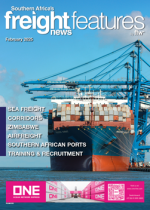The reopening of bunkering in Algoa Bay is not just a return to business, it’s a chance to redefine South Africa’s role in the global maritime industry. By learning from past challenges and leveraging new opportunities, Algoa Bay can become a model for sustainable and efficient offshore bunkering, says Durand Naidoo, CEO of Linsen Nambi. “With collaboration among government, industry stakeholders, and operators, Algoa Bay’s future is bright – not just as a refuelling point, but as a key player in South Africa’s blue economy.”Situated on South Africa’s southeastern coastline, Algoa Bay has long been a maritime hub due to its strategic location on major global shipping routes. Offshore bunkering began in the region in 2016, marking a pivotal moment in South Africa’s maritime industry.While it initially held great promise as an offshore hub thanks to its location, offering vessels travelling east to west a convenient refuelling stop, it quickly spiralled. Foreign operators moved quickly to capitalise on South Africa’s potential – and not long after the South African Maritime Safety Authority inexplicably and irregularly instituted a moratorium preventing local South African bunker operators from entering the market. Naidoo says despite the promising start, offshore bunkering in Algoa Bay has faced several challenges, with regulatory uncertainty and tax compliance issues the most prominent.“A lack of clear, comprehensive regulations governing offshore bunkering led to operational ambiguity. Issues such as taxation, licensing and oversight created a challenging environment for investors and operators,” he says.In 2021, the foreign operators were suspended following concerns about non-compliance with tax regulations. This suspension highlighted gaps in the industry’s regulatory framework and underscored the need for a clear, enforceable tax code. The suspension allowed authorities to address these issues, ensuring that the industry could operate within a transparent and compliant framework in future.“After years of regulatory review and consultation, Algoa Bay is now poised to reopen its offshore bunkering operations under a more robust framework. Recent updates, including the finalisation of tax codes by the South African Revenue Service, represent a significant step forward in creating a stable and attractive environment for bunkering,” says Naidoo. “The new tax codes address historical ambiguities, providing clarity for operators and ensuring the government benefits from this lucrative industry. Additionally, improved regulatory oversight is expected to foster greater confidence among stakeholders.”According to Naidoo, the offshore bunkering in Algoa Bay presents several opportunities for South Africa. “It has the potential to generate substantial revenue for the country through taxes, fees and job creation. It also supports the broader maritime value chain, including logistics, maintenance and supply ser v ices.”Furthermore, as global shipping lanes become busier, Algoa Bay’s location is a natural refuelling point for vessels. By providing efficient and cost-effective services, South Africa can establish itself as a preferred maritime hub.“A stable and transparent regulatory environment will attract both local and international investors, further bolstering the industry’s growth,” says Naidoo. “By addressing past regulatory issues and creating a compliant and efficient framework, South Africa has the opportunity to set a standard for offshore bunkering operations globa lly.” LV

